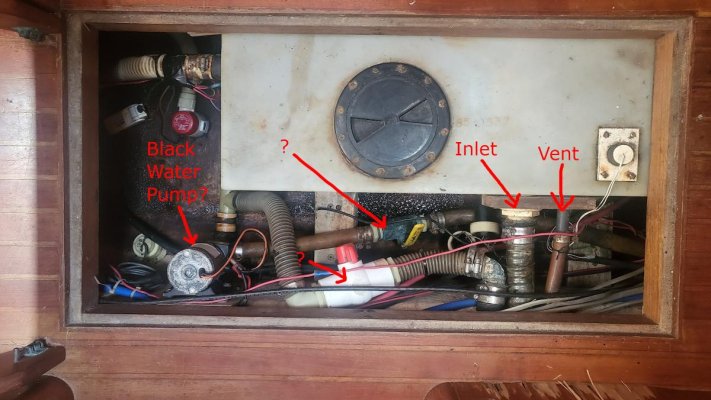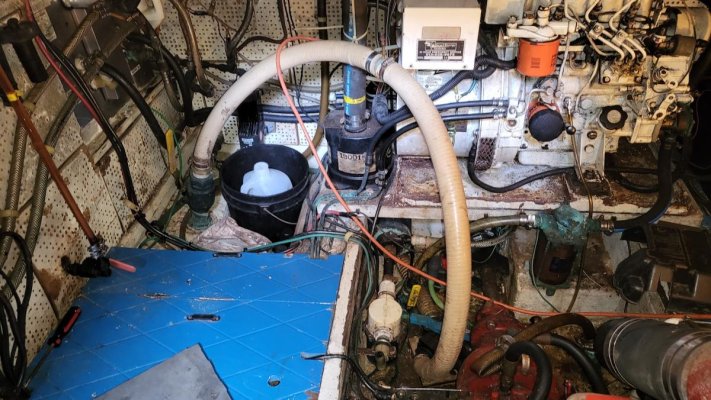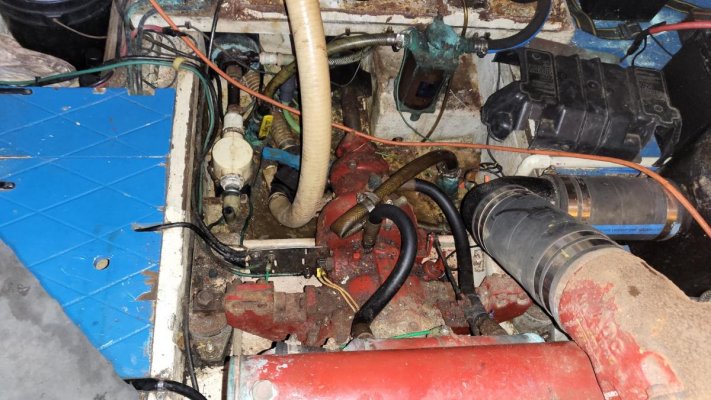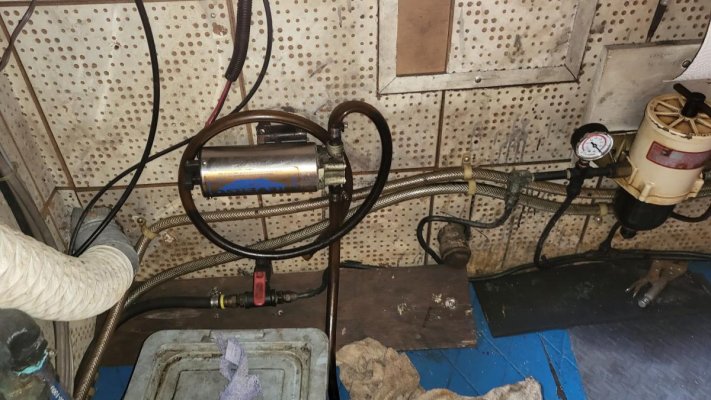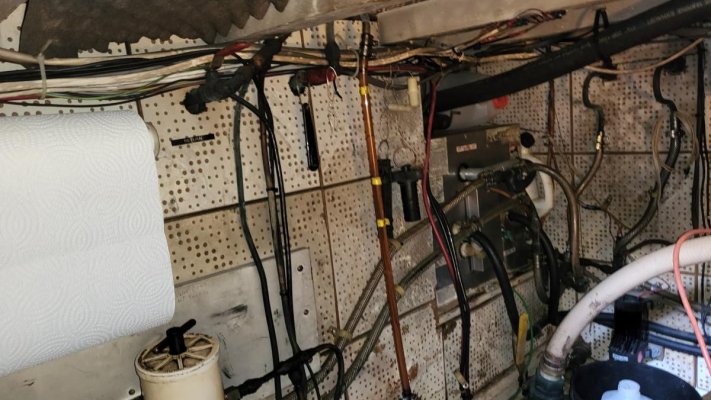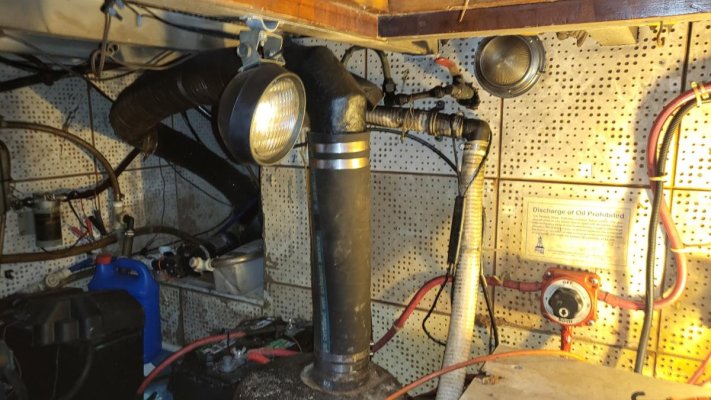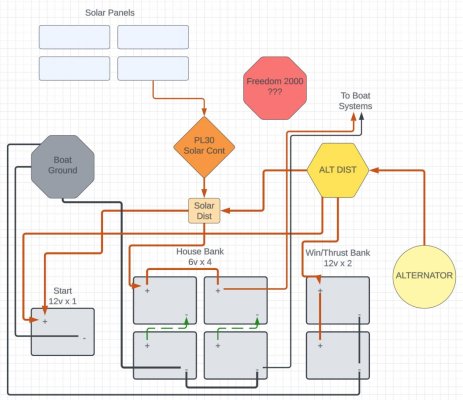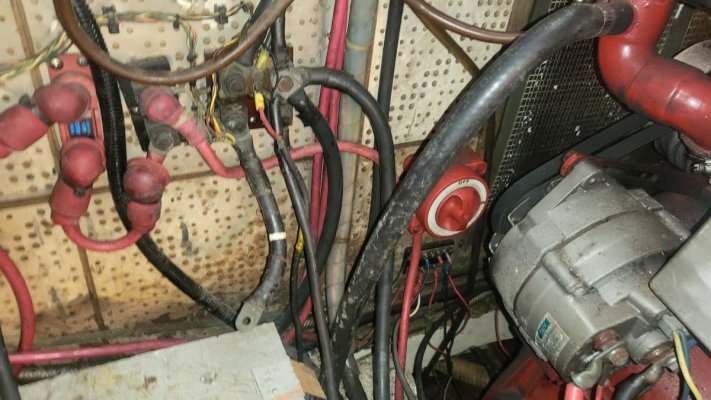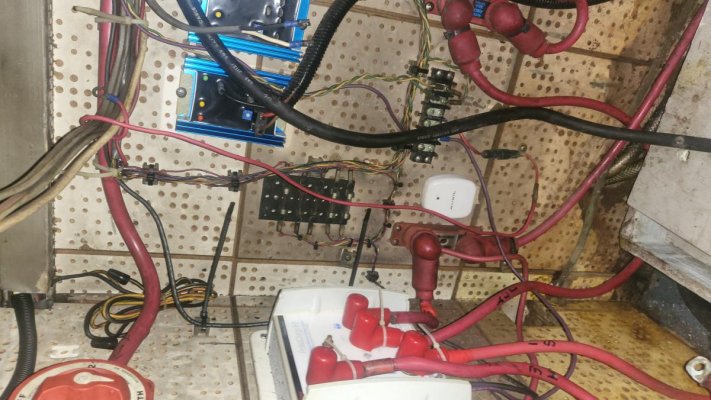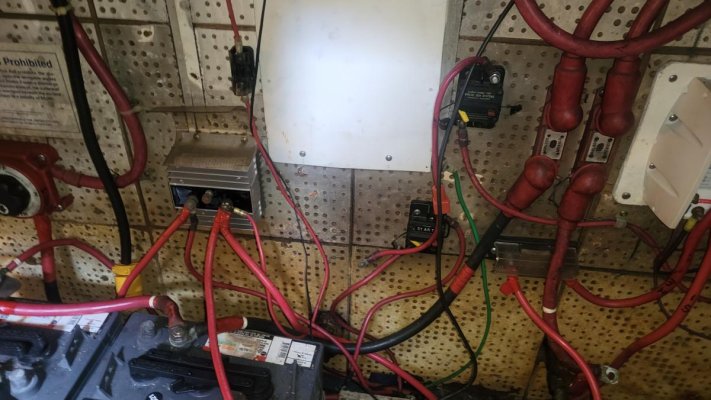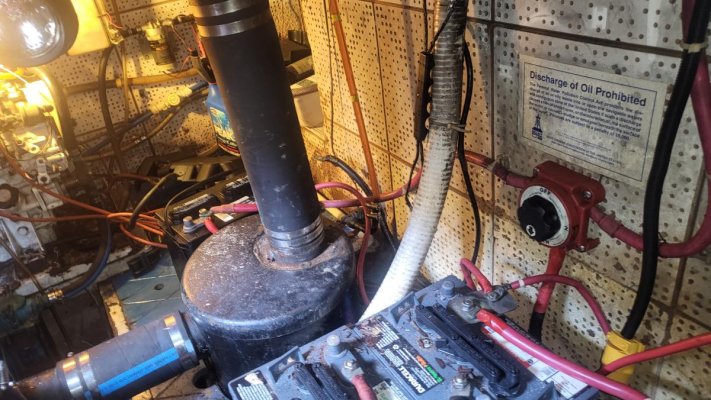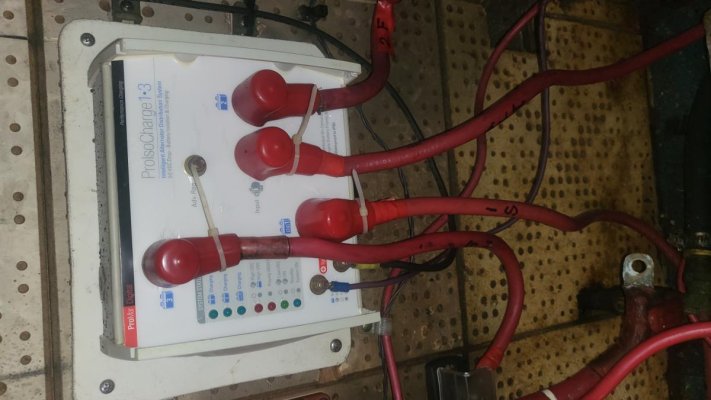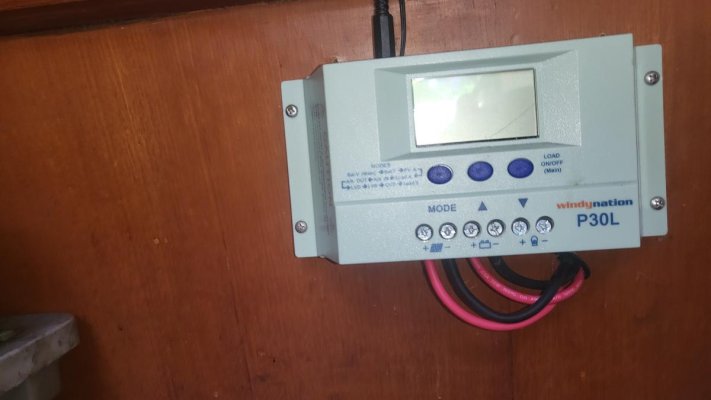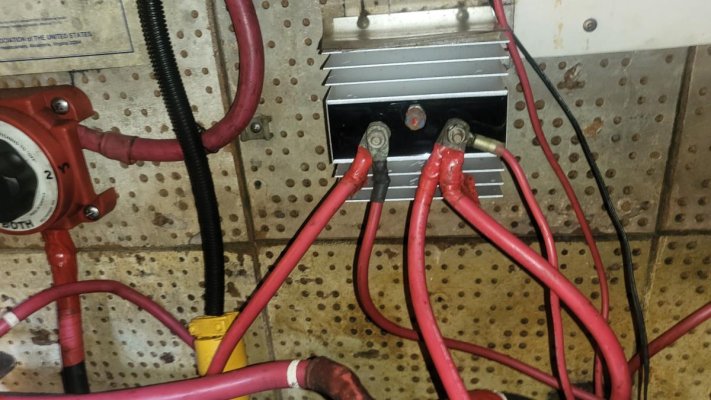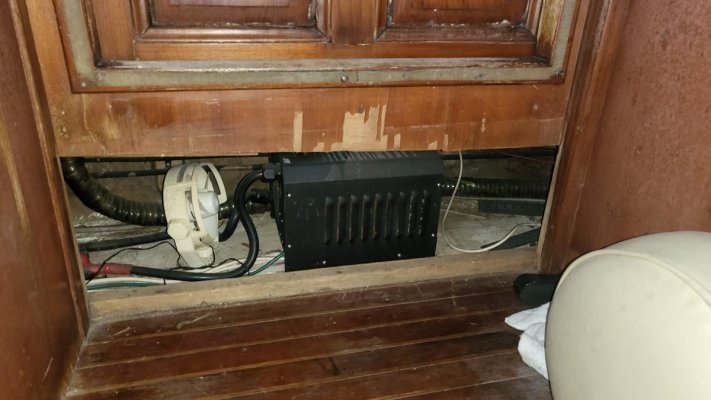DBG8492
Senior Member
- Joined
- Jan 16, 2023
- Messages
- 243
- Vessel Name
- Growler
- Vessel Make
- 1986 Marine Trader 36 Sundeck
My fiancé and I just acquired a 1986 MT 36 Sundeck that - due to the previous owner's death - has been sitting at a dock for two years while the family sorted out the estate.
We have to move her from the dock by the 1st of August and are trying to sort through everything before doing so.
We have a long list of things and are working through it, but I am reaching out for some help with (hopefully) identifying a few things I'm unsure of.
First things first - the black water tank and sanitation.
The forward head is non-op - it's an old Jabsco pump, and it doesn't appear to work. The aft head is electric, but we haven't turned the switch on yet because I haven't ID'd all the inlets, outlets, hoses, and valves and I don't want to break anything if something is clogged. Last thing I want is a bilge full of sewage...
The first pic below should be an overhead of the black tank under the galley sole. I have written what I believe to be the ID of each thing I see - and added question marks for things I don't know. I'm guessing that the large pump is the black water pump, and the large white valve is the OBD valve that should be locked or something but isn't. Not labeled at the top left of the pic is what I believe is the inlet for the aft head because it enters the top of the tank.
In the second and third pics - from the aft part of the engine room, you can see the high-arcing white sanitation hose that comes from a large seacock on the starboard side of the hull. The seacock is open that hose feeds down to a three-way valve in the bilge that's barely visible in the two pics - it's black with a blue lever. There's another sanitation hose that feeds back towards the aft cabin and another on the front that feeds under the engine and towards the bow. Does anyone know what this is? My first guess was that it was the pickup for seawater to the heads - but it seems like a very large seacock and hose for that. Also, if that's what it is, why the three-way valve?
The fourth pic is what I believe to be the electric pump for an oil change system, but I wanted to make sure before I mess with it. The inlet hose goes to the bottom of the sump and the outlet is just hung behind the pump.
The fifth and sixth pics are of the fuel inlets/outlets on the starboard and port fuel tanks, respectively. Note that the starboard side tank has an inlet labeled "Return" with a tag. The Outlet isn't labeled at all. However, it feeds what appears to be a piece of clear tubing with what looks like tape markings of some sort on it. Also, there is no visible return line to the port tank, but there is an identical piece of clear tubing there - also with tape markings. Are these fuel level indicators? Because both of them have fuel in them, but it doesn't go all the way to the top on either side - there's air in them at the top. I'm guessing these aren't a part of the fuel feed system because of the air - but I'm not sure. There are no fuel gauges on the instrument panel either.
And why isn't there a return to the port tank?
The engine runs perfectly. According to the estate, the owner rebuilt her a few months before he died and barely put more than a few hundred hours on her after the rebuild. I changed the impeller and will change the oil just to be sure, but it looks and smells brand new. And we've run her at the dock for more than thirty minutes, so if there was any air in the lines, it would have made itself known during that time.
Anyway, if anyone has any input on any of this stuff, it would be appreciated. We are about to head back down there and I'm going to try to sort out the electrical system and what charges what when and how. The thruster/windlass batteries are dead, and the engine start battery seems weak, but the house batteries appear to be charging. However, I think the house batteries may be charging from solar and that doesn't charge anything else - but of course, none of the wiring is labeled so...
Thanks in advance!
We have to move her from the dock by the 1st of August and are trying to sort through everything before doing so.
We have a long list of things and are working through it, but I am reaching out for some help with (hopefully) identifying a few things I'm unsure of.
First things first - the black water tank and sanitation.
The forward head is non-op - it's an old Jabsco pump, and it doesn't appear to work. The aft head is electric, but we haven't turned the switch on yet because I haven't ID'd all the inlets, outlets, hoses, and valves and I don't want to break anything if something is clogged. Last thing I want is a bilge full of sewage...
The first pic below should be an overhead of the black tank under the galley sole. I have written what I believe to be the ID of each thing I see - and added question marks for things I don't know. I'm guessing that the large pump is the black water pump, and the large white valve is the OBD valve that should be locked or something but isn't. Not labeled at the top left of the pic is what I believe is the inlet for the aft head because it enters the top of the tank.
In the second and third pics - from the aft part of the engine room, you can see the high-arcing white sanitation hose that comes from a large seacock on the starboard side of the hull. The seacock is open that hose feeds down to a three-way valve in the bilge that's barely visible in the two pics - it's black with a blue lever. There's another sanitation hose that feeds back towards the aft cabin and another on the front that feeds under the engine and towards the bow. Does anyone know what this is? My first guess was that it was the pickup for seawater to the heads - but it seems like a very large seacock and hose for that. Also, if that's what it is, why the three-way valve?
The fourth pic is what I believe to be the electric pump for an oil change system, but I wanted to make sure before I mess with it. The inlet hose goes to the bottom of the sump and the outlet is just hung behind the pump.
The fifth and sixth pics are of the fuel inlets/outlets on the starboard and port fuel tanks, respectively. Note that the starboard side tank has an inlet labeled "Return" with a tag. The Outlet isn't labeled at all. However, it feeds what appears to be a piece of clear tubing with what looks like tape markings of some sort on it. Also, there is no visible return line to the port tank, but there is an identical piece of clear tubing there - also with tape markings. Are these fuel level indicators? Because both of them have fuel in them, but it doesn't go all the way to the top on either side - there's air in them at the top. I'm guessing these aren't a part of the fuel feed system because of the air - but I'm not sure. There are no fuel gauges on the instrument panel either.
And why isn't there a return to the port tank?
The engine runs perfectly. According to the estate, the owner rebuilt her a few months before he died and barely put more than a few hundred hours on her after the rebuild. I changed the impeller and will change the oil just to be sure, but it looks and smells brand new. And we've run her at the dock for more than thirty minutes, so if there was any air in the lines, it would have made itself known during that time.
Anyway, if anyone has any input on any of this stuff, it would be appreciated. We are about to head back down there and I'm going to try to sort out the electrical system and what charges what when and how. The thruster/windlass batteries are dead, and the engine start battery seems weak, but the house batteries appear to be charging. However, I think the house batteries may be charging from solar and that doesn't charge anything else - but of course, none of the wiring is labeled so...
Thanks in advance!

